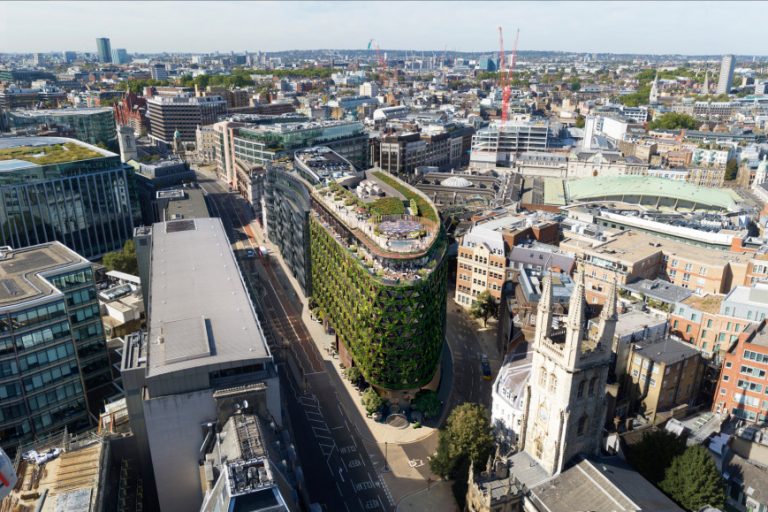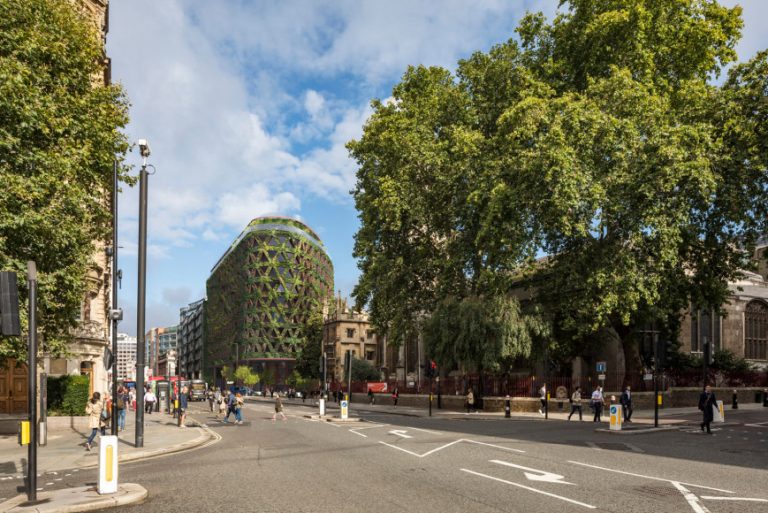Sheppard Robson’s architectural firm has unveiled some of the plans for the Citicape House, a London multipurpose building that will have the largest “ecological” wall full of plants, which is expected to improve air quality in the area. Specifically, the facade of the building will have more than 400,000 plants, which in turn will contribute on the one hand to the “absorption” of eight tons of carbon and on the other hand to the production of six tons of oxygen per year. The separate building will be located in a busy London area between Farringdon and Moorgate.

Specifically, the facade of the building will have more than 400,000 plants, which in turn will contribute on the one hand to the “absorption” of eight tons of carbon and on the other hand to the production of six tons of oxygen per year. The separate building will be located in a busy London area between Farringdon and Moorgate.
The aim, through the design of Citicape House, is to highlight the way in which architecture can “communicate” issues related to climate change and air pollution.

“In such a special part of the city, there was a great need to address some of London’s most pressing environmental issues, such as air quality and dust pollution,” said Dan Burr, an associate at Sheppard Robson’s office. “Instead of creating a space with greenery somewhat isolated, we chose, always based on local environmental conditions, to make the city better and more vibrant, as well as to make a clear architectural statement.” Once completed, this 11-storey building will include a five-star hotel, venues for events and events, a sky bar, a spa and a restaurant. In contrast to the original layout of the building, in its new form the ground floor will protrude into the street, thus allowing the connection to a small square at the back.
The green facade of the building will be aligned with its beams, thus composing a form of external expression of this impressive construction. Of course, its construction will first require the demolition of the existing one, which was built before World War II. One of the most interesting elements of Citicape House will certainly be its terrace, thanks to which guests will be able to gaze freely at the view of London. The architectural office has also made sure that the building has low U-values, a unit that measures how insulating the material is. Finally, it is worth noting that the British Architecture Studio was founded in 1939 by Richard Herbert Sheppard and has offices in London, Manchester and Glasgow.










